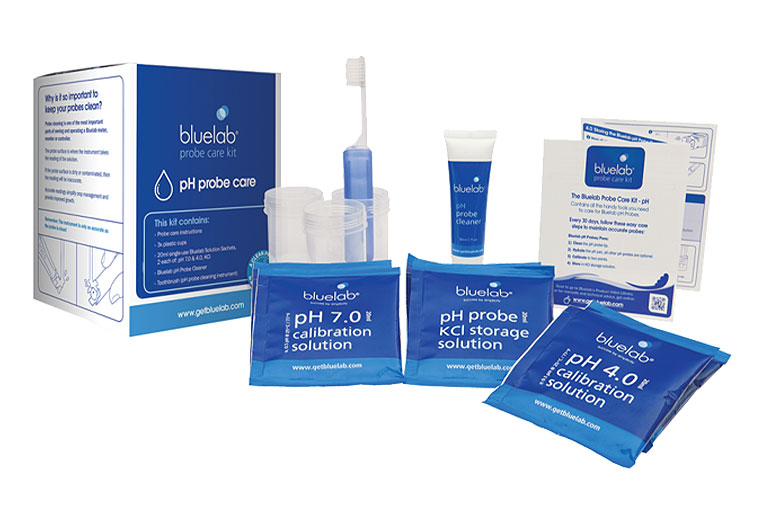The Easy Nutrient Solution Strength Guide
To grow the biggest and best plants, it’s vitally important to get your nutrient solution strength right. To do this, you need to ensure you correctly measure the EC and pH of your nutrient solution. We often see, hear, or read what ideal readings should be, but may not realise what they actually mean?
What is EC?
EC is a metric to measure the nutrient solution strength you’re going to give to your plants. EC stands for electrical conductivity. This is the potential any material has to conduct electricity.
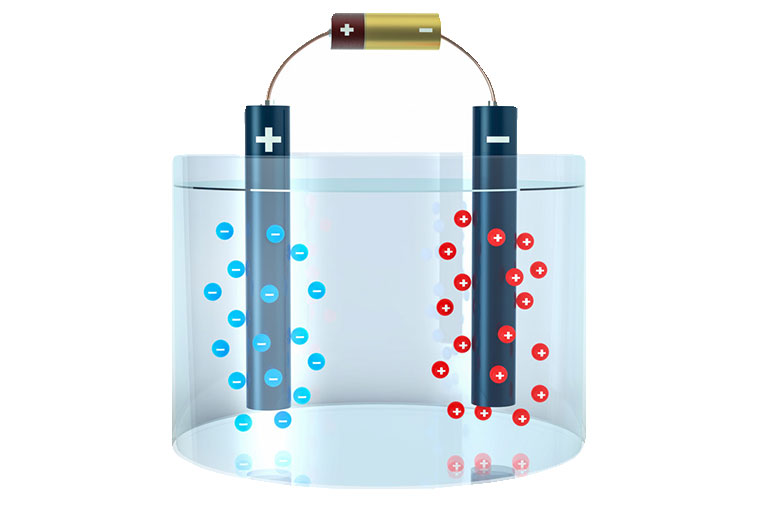
Indoor growers primarily measure feed in ml or grams per litre. EC is slightly more profound. It is crucial for growers to understand EC and why it matters:
- An ion is an element in the water, mostly made out of (feeding) salts that conduct electricity. Higher concentrations of ions means an increase in electrons and a stronger Nutrient Solution Strength. When we add nutrients to the water, we increase the conductive potential, increasing its EC value.
Pure water (RO or DI (distilled) water) contains no minerals, so have no electrical conductivity. When we add mineral salts (nutrients) to RO/DI water, they dissolve and add electrical conductivity. Measuring the conductivity tells you how much nutrient is present in the water. EC tells you the nutrient solution strength or the EC of the available nutrients.
What EC Do Your Plants Need?
It can depend on the type of plant growing. The EC measurement should be between 1.2-and 1.6 during the vegetative stage and 1.6-and 2.4 during flowering for most plants. Tomatoes can tolerate an EC up to 2.8, and spinach as high as 3.5. In contrast, basil should be no higher than 1.4.
Feed Charts
Most nutrient manufacturers publish feed charts. Feed charts guide you through the ml/l ratios of their nutrients and boosters. They usually show you the EC to aim for, to help you provide optimum nutrient levels through the lifecycle of your plants. Manufacturers, like GrowDog, publish feed charts to cover Hydroponic/GrowDog Coco and GrowDog Soil/Perlite grown plants.
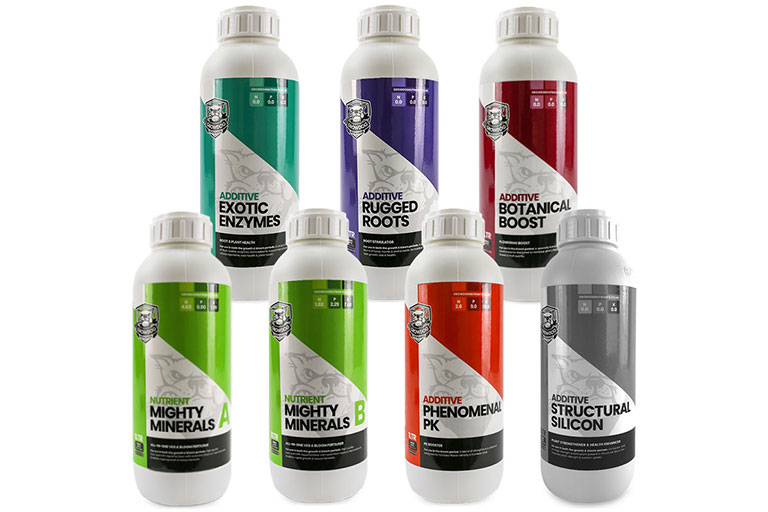
Is The Nutrient Solution Strength EC Value Important?
Measuring your nutrient solution strength in EC gives you a clear idea of what is happening within the nutrient solution you’re feeding. Over time, your EC can fluctuate, so you need to measure it regularly.
The following sections cover the main points on EC. They cover how you can react to each point to allow your plant to get the best access to the nutrients that you’re feeding them.
Garden tip: To understand what your plants are taking up, the next time you feed them, gradually water them enough to achieve around a 20% run off. Then capture the run-off and measure it with your calibrated EC probe.
EC Stays The Same
If the EC of the run-off stays the same, this shows that the plant is balanced and using equal amounts of water and nutrients.
EC Goes Down
If the EC value of the run-off goes down, this shows that the plant is using more nutrients than water. Try a stronger nutrient solution strength at the next feed.
EC Goes Up
If the EC value of the run-off goes up, this shows that the plant is using more water than nutrients, and it isn’t taking nutrients up as it should be. You may have a salt build up in the media. A general guide is to add water only to dilute the salts down and help to wash the build up out. The temperature may also affect this. On hot days, your plants may take up more water.
Things To Remember With EC
EC measures the number of available nutrients, but doesn’t tell you how much of each element is present. Certain aspects may have built up to levels that could damage your plants. As a result, it is possible to have the perfect EC measurement but still suffer from nutrient deficiencies. Top up nutrients when needed and do a complete nutrient refresh every week if you are using a reservoir or tank.
Measuring EC?
The quickest and easiest way to measure your EC is by using a digital meter. EC meters work by gauging the electrical conductivity via electrodes. You place the end of the meter into your feed solution and then check the digital readout for your result.
The BlueLab Truncheon meter (below) is a proven grow room workhorse with a great track record for quality and performance.
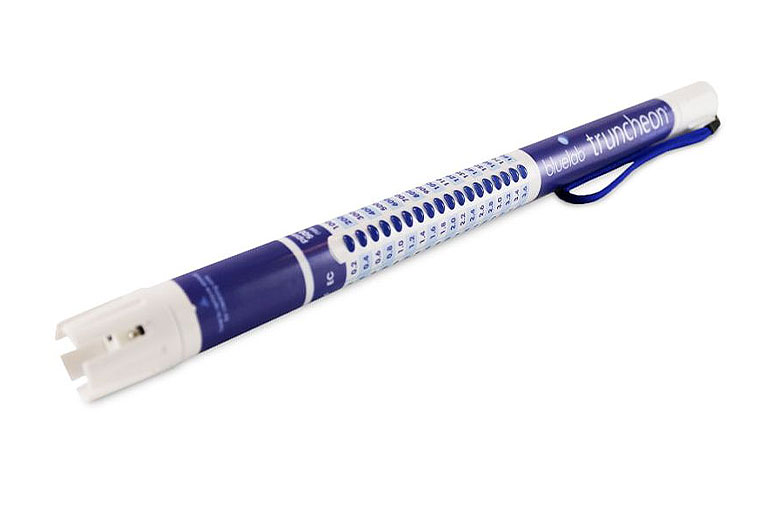
Calibrating EC Devices
EC should be measured regularly, so you can keep an eye on what is happening. Things can evolve quickly, so it is best to catch problems as soon as they arise. To ensure your EC metre consistently delivers accurate readings, remember to clean and calibrate it regularly. Use EC standard conductivity solutions with a known conductivity to calibrate/check your EC testing device.
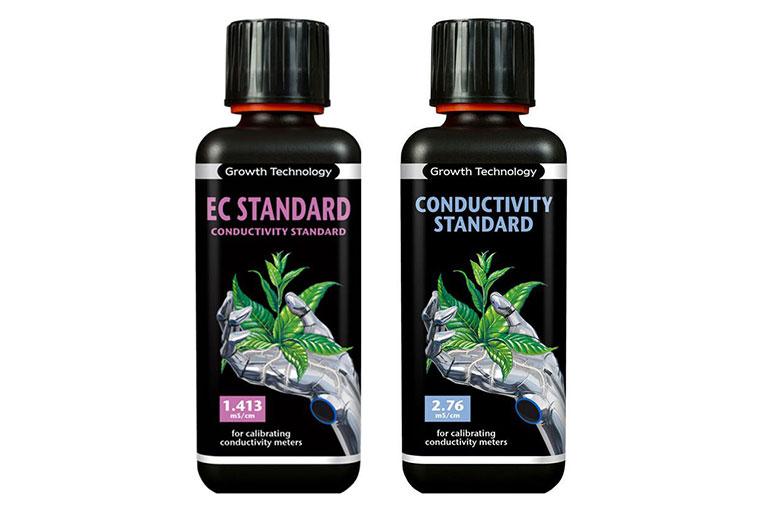
What is pH?
pH stands for potential of Hydrogen. It is an indicator of how acidic or alkaline a substance is. You measure pH on a 14-point scale, from zero (most acidic) to 14 (most alkaline). Both acids and bases are caustic at their extremes. They react violently with organic tissue, effectively burning or dissolving it. The range of pH found in your growing medium can influence your plant’s growth and development.
Use a good quality pH pen to measure your nutrient solution’s pH. Products like the BlueLab pH pen (below) are proven grow room workhorses with a great track record for quality and performance.
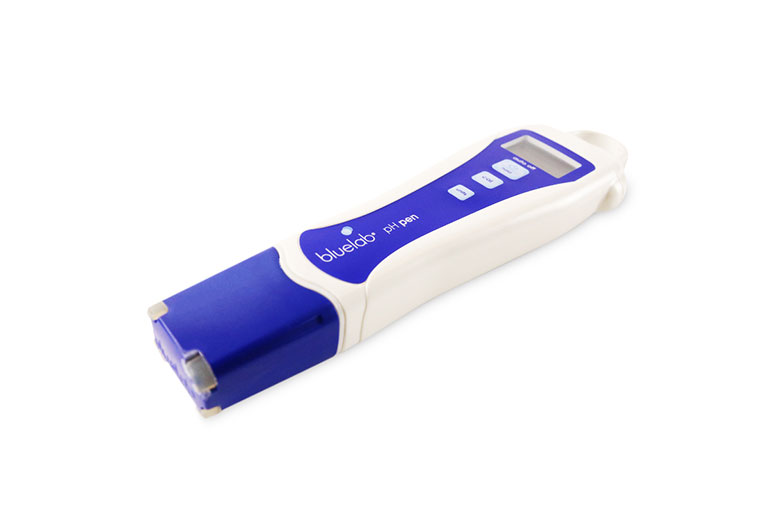
Many plants require slightly acidic soil to flourish. This equates to a range of roughly 5.5 to 6.5. Always check your plant’s specific needs for the best results. Maintaining a somewhat acidic pH allows your plants to absorb nutrients, including nitrogen, phosphorus, and potassium. All of which are vital for growth and flowering. pH levels within the perfect range mean that all the fertilisation and media maintenance will work to maximum effect. Without proper acidity in the media, everything else will be knocked off balance.
Measuring soil pH
Measuring pH is easy. Testing kits are available in several forms, such as paper strips, tablets, and electronic readers to measure EC and pH simultaneously. Each comes with instructions, but here is what you do. Make some mud by mixing a soil sample with dechlorinated water (pure water is pH 7 (neutral) on the pH scale). Insert your testing material. The test will change colour or otherwise indicate the pH result per the test kit instructions. Compare the results, and you’ll know the pH of your soil.
Correcting pH
Now that you know the importance of pH, the next question is, how do you correct it if it is wrong? The answer is to add more acid or alkaline to your growing media. You can use either “pH UP” or “pH DOWN”. These are liquid products that do exactly what they say. It is specially formulated to adjust the pH in your media without damaging your plants further. You measure the recommended dosage and add it to your feed before watering.
What Are The Benefits Of Monitoring EC and pH?
Most growers do not have a proactive plan to prevent nutrient problems. Regular monitoring of the EC and pH of the growing media can avert almost all nutrient-related problems. It also gives you a representation of the availability of all macro-and micronutrients.
Reacting to nutritional problems as and when they appear is not ideal. You may be unable to reverse the damage that has already occurred. Monitoring pH and EC makes it possible to prevent these problems. Keeping plants in optimal health and more resistant to insect pests and diseases.
Tracking the pH and EC of the growing medium is a fantastic preventative approach to nutritional problems. It allows for the detection of possible issues before they affect plant growth and quality. There are many products available to assist you in keeping your EC and pH in check.
Calibrating EC Devices
EC should be measured regularly, so you can keep an eye on what is happening. Things can evolve quickly, so it is best to catch problems as soon as they arise. To ensure your EC metre consistently delivers accurate readings, remember to clean and calibrate it regularly.
To calibrate your EC measuring device, use a suitable EC buffering solution. Decant a small amount into a container and insert the EC probe into the solution and check that your meter agrees with the expected readings from the solution.
Calibrating Electronic pH Measuring Devices
If you grow hydroponically, you should check the pH of the solution whenever you create a new nutrient solution. Things can evolve quickly, so it is best to catch problems as soon as they arise.
To ensure your pH meter consistently delivers accurate readings, remember to clean and calibrate it regularly. To keep it clean and calibrate your pH meter, follow the manufacturer instructions and use the relevant pH buffers. BlueLab pH calibration and cleaning kits are perfect for the job.
